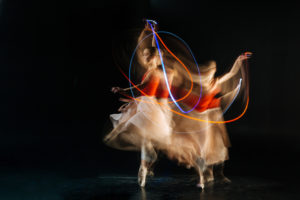As my imaginary conversation with Laban progresses, he begins to share more deeply.
CLM: I always suspected there was more to your choice of the icosahedron as a model of the kinesphere. Please go on.
R.Laban: You see, the icosahedron isn’t found in any crystalline forms. That is, it isn’t found in inorganic matter. But some microscopic organisms have icosahedral shapes – it is one of the shapes nature chooses for living forms.

CLM: Why is that important?
R. Laban: Because life curves, and most trace-forms of human movement are curvilinear.
CLM: Yet in Choreutics you write that “We can understand all bodily movement as being a continuous creation of fragments of polyhedral forms.” Polyhedra have straight edges and angular corners….
R. Laban: You mustn’t take everything I write so literally. Movement is curvilinear, but in order to create a geography for the kinesphere, I had to use geometrical forms. By conceptualizing trace-forms as rhythmic circles; that is, as polygons, these shapes can be matched to the geometric geography of the kinesphere.
CLM: I think I’m beginning to understand.
R. Laban: You see, my polygonal trace-forms are stylizations of the organic curves of human movement. I’ve simply done what visual artists do when they take the curved shape of a leaf or a flower and geometricize it. They create a pattern.
CLM: That’s what you’re doing, then. You are imposing a pattern on the curves of living movement.
R. Laban: That’s exactly right. Without pattern, the movement just disappears as it is occurring. By geometricizing trace-forms and the geography of the kinesphere, I’ve provided some “fixed points” so that dance and movement can be objects for contemplation and study.
CLM: Now I think I really need that cool drink!
